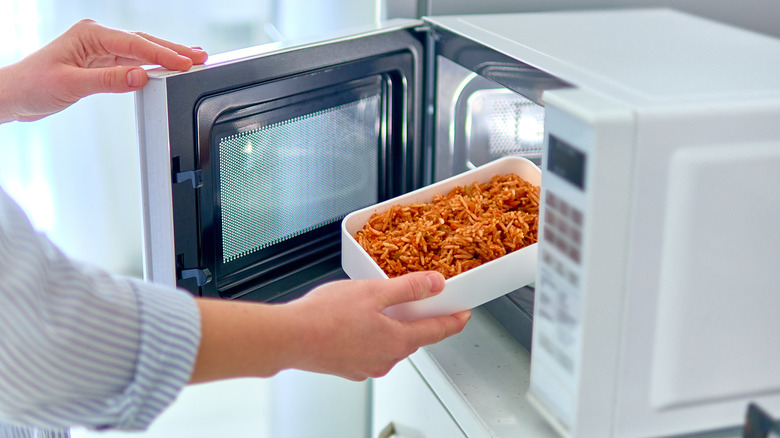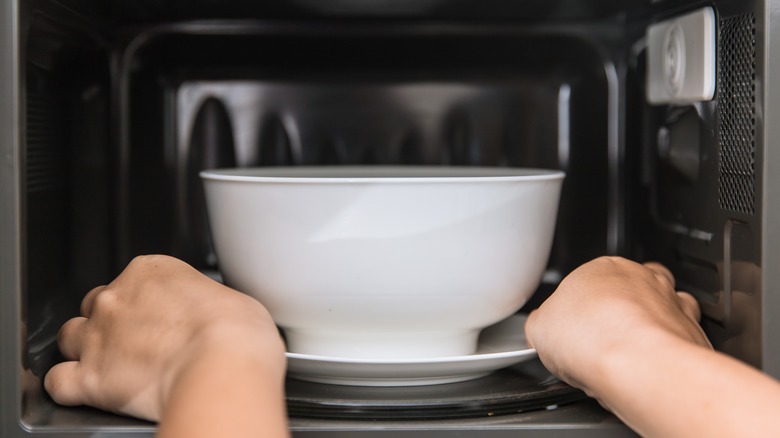The Water Trick That Shows If A Dish Is Actually Microwave-Safe
The microwave is an incredibly useful appliance, but it's also a quirky one. Since a microwave works so differently from an oven and the heating element isn't easily visible, it can be hard to figure out which dishes are microwave safe and which aren't. While metal works great with flame, it's dangerous in a microwave. Conversely, an oven's heat will melt plastic plates, but hard plastic holds up perfectly well in a microwave. But what about other, less obvious categories of dishes such as, for one example, ceramic? We've found a hack that works just great at determining if your new plates and bowls will actually heat your food, or just themselves.
Before getting started, it's good to confirm that there is no clear information on the dishes and remember that microwave safe doesn't necessarily mean oven safe. Confirm that there is nothing written underneath the dish that tells you what you want to know. If not, proceed to the experiment.
To test your materials, you will need three things: The dish you're wondering about, some tap water, and a microwave-safe cup or bowl to put the water in. After filling your receptacle with a cup or so of water, put it in the microwave next to the dish you're not sure about.
If it can't take the heat, keep it out of the microwave
Next, close the microwave door and turn on the microwave for a minute. Take out the dish and the cup of water.
If the water is hot and your dish is still cool, it's safe to use in a microwave. If the dish is hot and the water is not, your dish is not safe for microwave use.
It's that simple. Basically, you're turning an unfortunate life experience into an experiment. Often dinnerware which is not safe for the microwave heats up extraordinary quickly, while your food itself remains lukewarm. This is both frustrating and potentially dangerous — as some of us know only too well, a burned hand and cold coffee equals a sad morning.
This trick works with larger platters and bowls as well. If you cannot fit the dish next to the glass container of water, you can put the water — still in its glass container — on top or inside of the larger dish and proceed with the rest of the experiment.
If only every key kitchen experiment could be performed in a minute or less.

